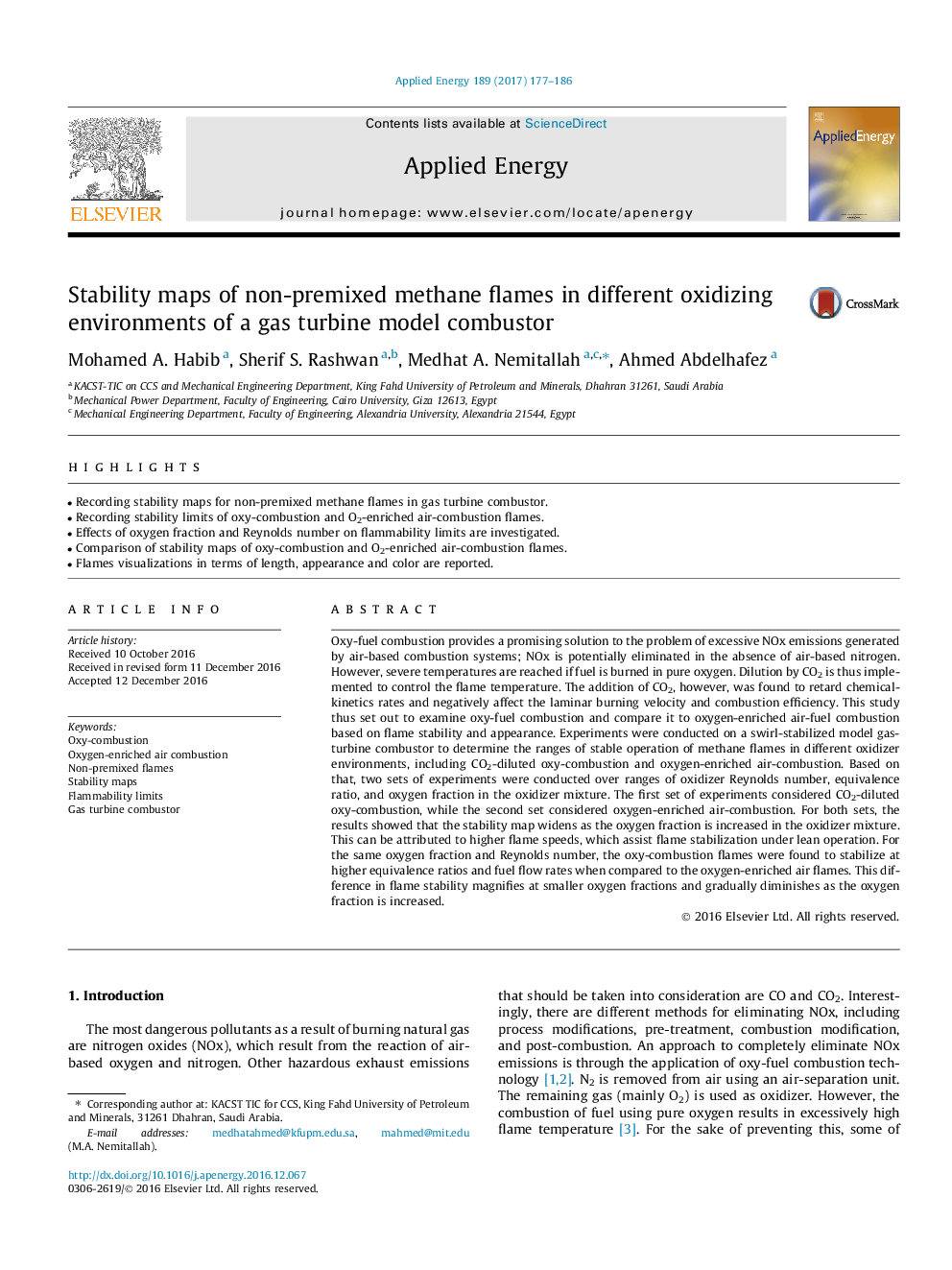| Article ID | Journal | Published Year | Pages | File Type |
|---|---|---|---|---|
| 4916745 | Applied Energy | 2017 | 10 Pages |
Abstract
Oxy-fuel combustion provides a promising solution to the problem of excessive NOx emissions generated by air-based combustion systems; NOx is potentially eliminated in the absence of air-based nitrogen. However, severe temperatures are reached if fuel is burned in pure oxygen. Dilution by CO2 is thus implemented to control the flame temperature. The addition of CO2, however, was found to retard chemical-kinetics rates and negatively affect the laminar burning velocity and combustion efficiency. This study thus set out to examine oxy-fuel combustion and compare it to oxygen-enriched air-fuel combustion based on flame stability and appearance. Experiments were conducted on a swirl-stabilized model gas-turbine combustor to determine the ranges of stable operation of methane flames in different oxidizer environments, including CO2-diluted oxy-combustion and oxygen-enriched air-combustion. Based on that, two sets of experiments were conducted over ranges of oxidizer Reynolds number, equivalence ratio, and oxygen fraction in the oxidizer mixture. The first set of experiments considered CO2-diluted oxy-combustion, while the second set considered oxygen-enriched air-combustion. For both sets, the results showed that the stability map widens as the oxygen fraction is increased in the oxidizer mixture. This can be attributed to higher flame speeds, which assist flame stabilization under lean operation. For the same oxygen fraction and Reynolds number, the oxy-combustion flames were found to stabilize at higher equivalence ratios and fuel flow rates when compared to the oxygen-enriched air flames. This difference in flame stability magnifies at smaller oxygen fractions and gradually diminishes as the oxygen fraction is increased.
Related Topics
Physical Sciences and Engineering
Energy
Energy Engineering and Power Technology
Authors
Mohamed A. Habib, Sherif S. Rashwan, Medhat A. Nemitallah, Ahmed Abdelhafez,
